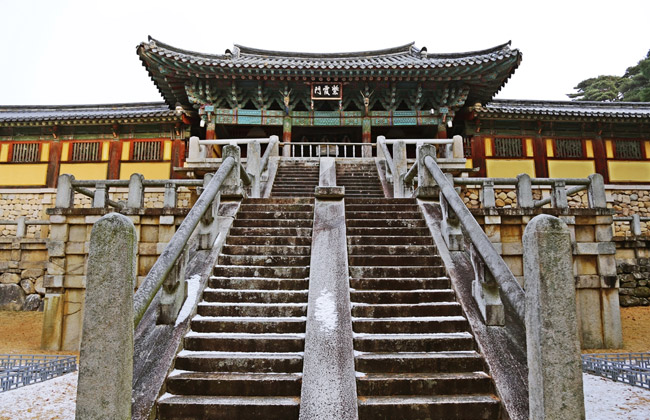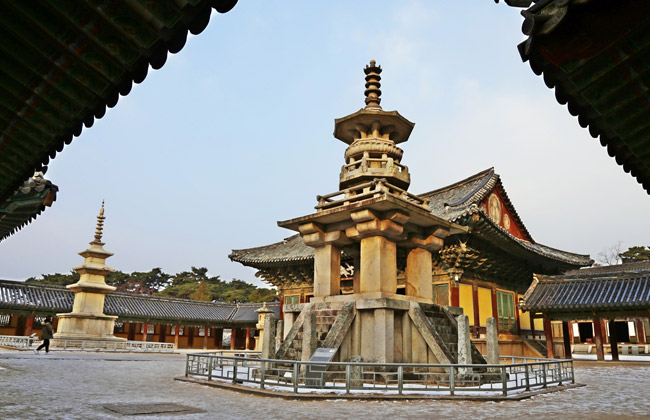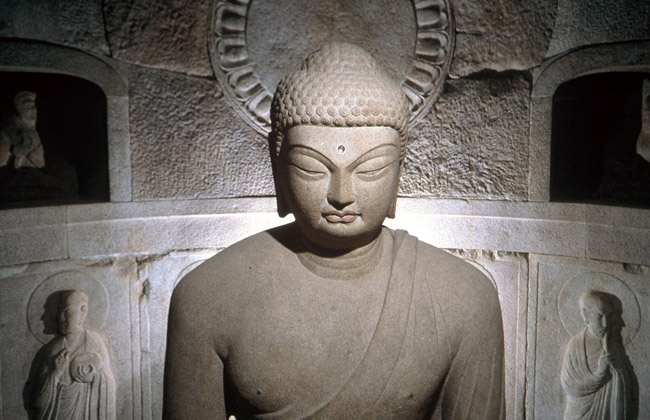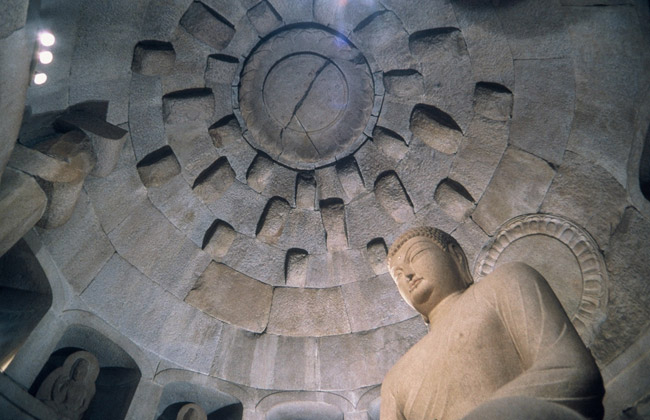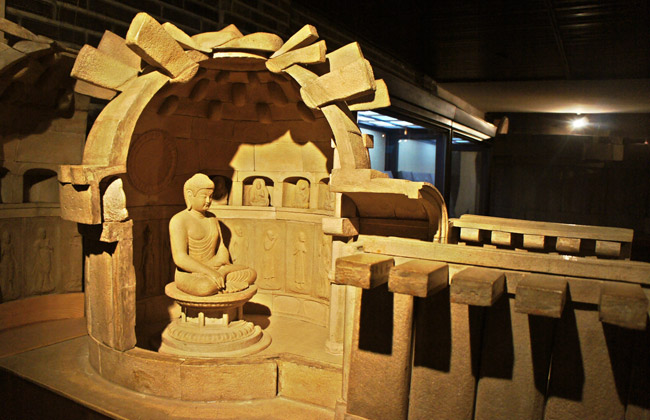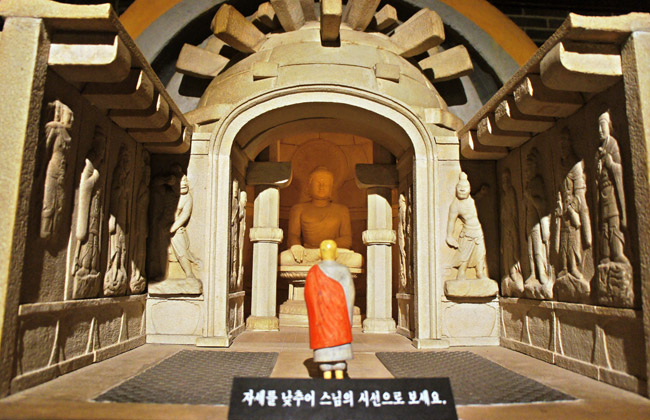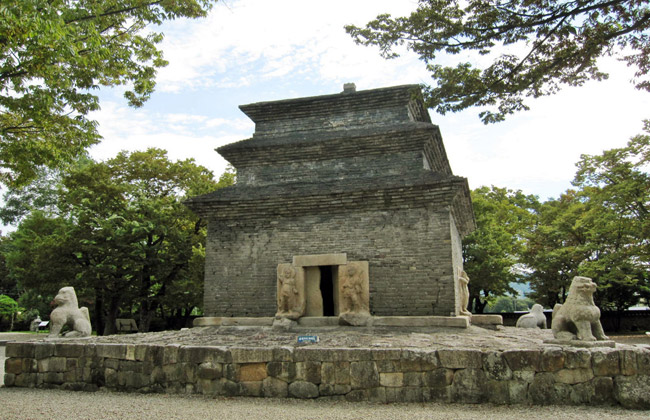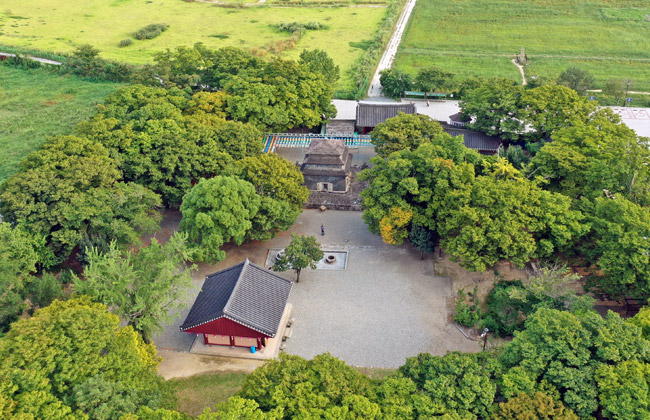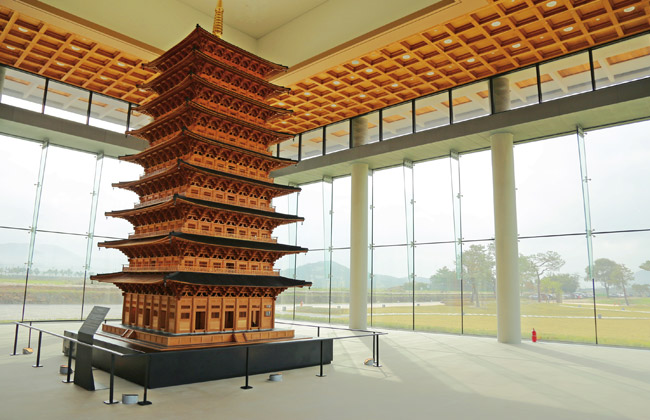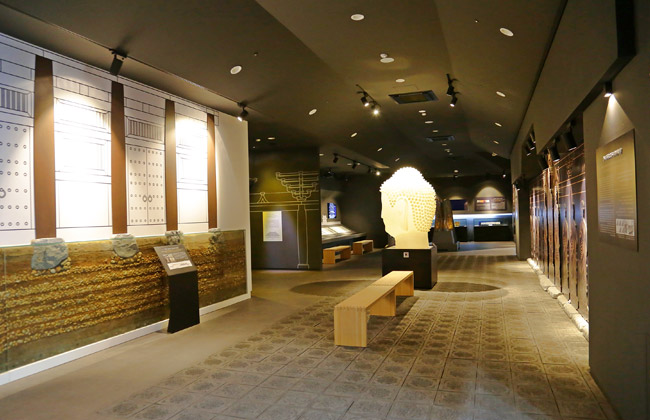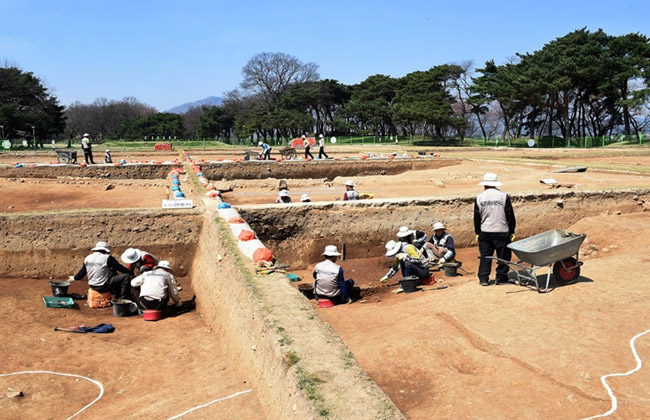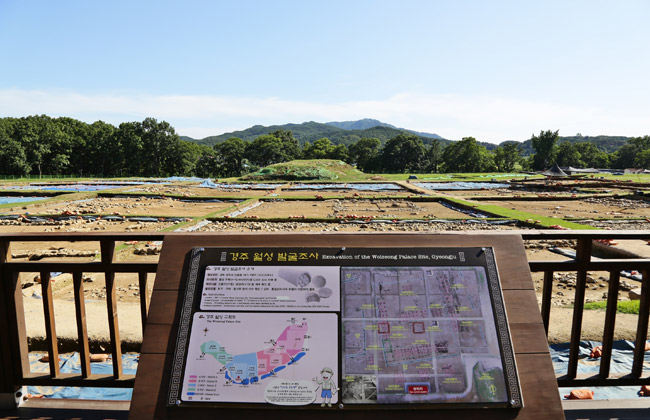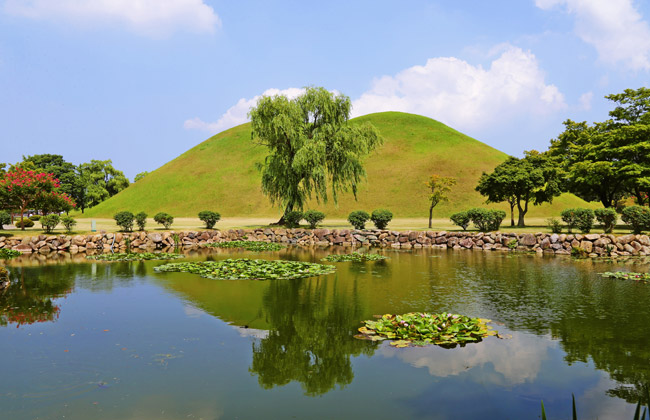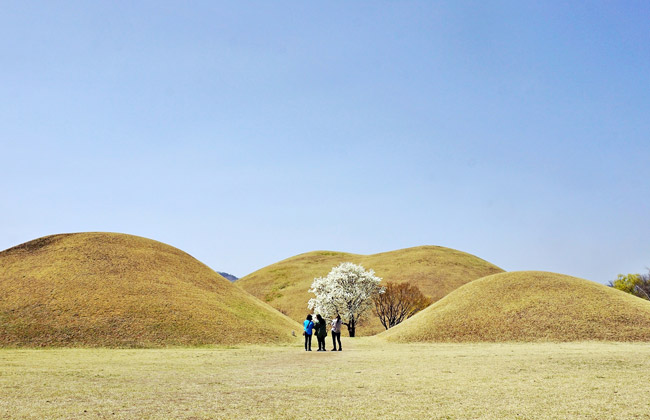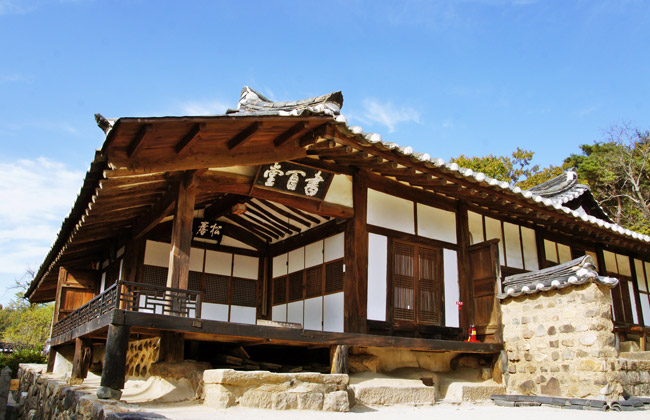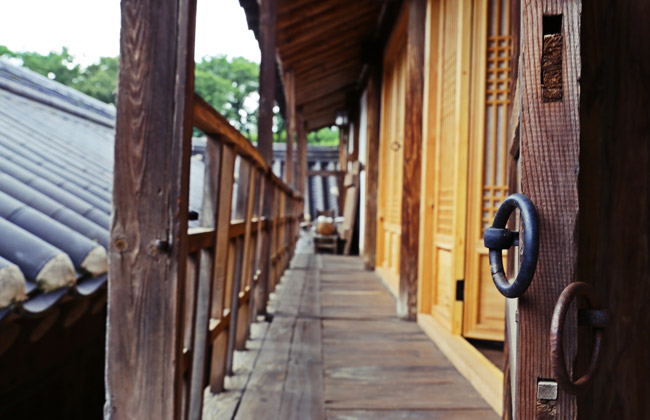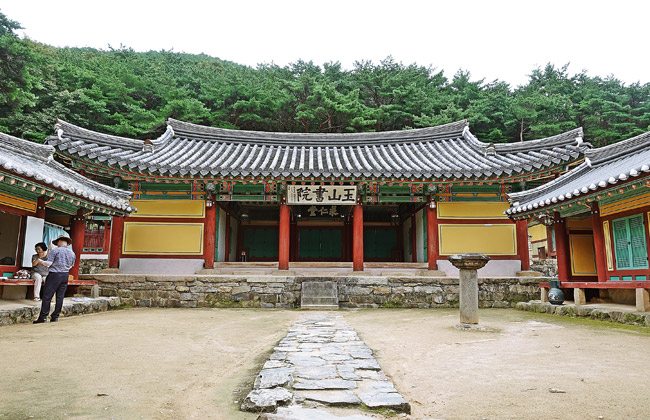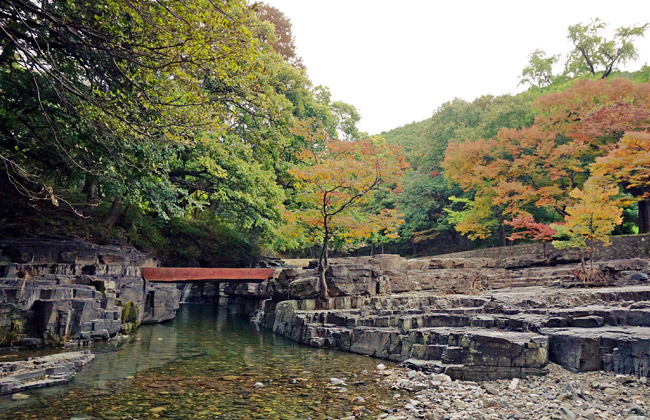Gyeongju Travel
Pilgrimage to the UNESCO World Heritage Sites in Gyeongju
한국관광의 메카 “Beautiful Gyeongju”가 여러분을 초대합니다.
- The perfect Gyeongju UNESCO textbook tour
- Even though we speak different languages and have different ways of living, we are all impressed by the pyramids of Egypt, Angkor Wat in Cambodia, Bulguksa Temple and Seokguram in Korea. UNESCO adopted the Convention for the Protection of World Culture and Natural Heritage in 1972 to discover and protect valuable natural and cultural heritage. UNESCO World Heritage Sites are largely divided into separate categories such as World Heritage Sites, Recorded Heritage Sites, and Mixed Heritage Sites. The World Heritage Sites are further divided into Cultural Heritage Sites, Natural Heritage Sites, and Complex Heritage Sites. Among these, cultural heritage refers to a UNESCO World Heritage Site that we are familiar with. There are 14 World Heritage Sites in Korea. Gyeongju is the city with the most World Heritage Sites in Korea. Bulguksa Temple and Seokguram Grotto (listed in 1995), Gyeongju Historic Area (listed in 2000), Yangdong historical Village (listed in 2010), and most recently of the nine Confucian Academies listed in UNESCO in 2019, the Oksanseowon Confucian Academy in Gyeongju was included. Travel to see all of the UNESCO World Heritage Sites in Gyeongju!
-
Course Explanation
#GyeongjuTextbookTrip #1night2daysTrip #GyeongjuWorldHeritage #GyeongjuMustSeeCourse
This is an overnight plan that can help you to enjoy Gyeongju's World Heritage Sites. Each World Heritage Site was selected based on the amount distance between each other, or the time it would take to travel between locations. The Gyeongju Historic Area is a large zone that is divided into five districts. So seeing all of the districts on an overnight trip would not be possible. For this course, we’ll skip destinations that are a little outside the city (Namsan Mountain and Sanseong districts), and focus on the Hwangryongsa Temple Site, Daereungwon, and Wolseong, which are all located in the city. -
Recommended Course
#1Bulguksa Temple
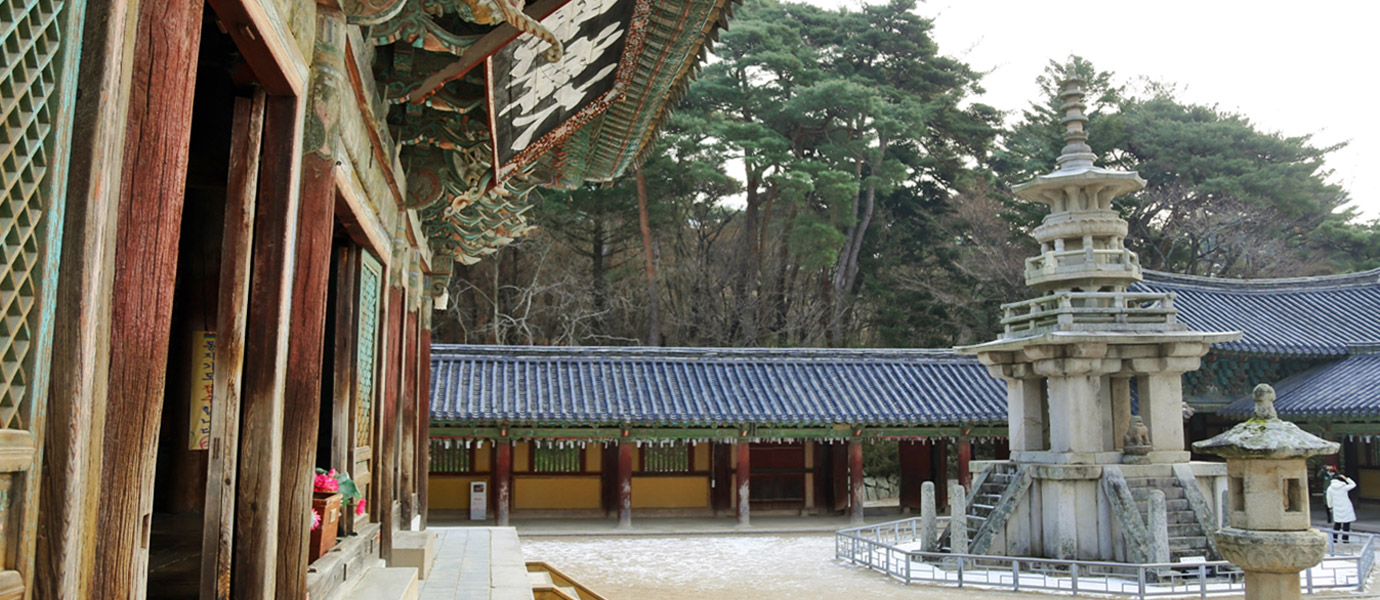
Bulguksa Temple was first listed as a UNESCO World Heritage Site along with Seokgulam, Seoul Jongmyo Shrine, and Hapcheon Haeinsa Temple in 1995. In Korea, there may be some people who have never come to Gyeongju, but have visited Bulguksa and Seokguram. Both heritage sites are prime examples of the outstanding cultural heritage of both Gyeongju and Korea. One can appreciate people’s devotion to Buddhism in their use of the best building techniques and substantial resources that went into building the Bulguksa Temple. The Buddhist doctrine melds together with temple building to form an ideal arrangement.
The Gagu-style stone building (Treasure No. 1745) supporting the temple is well-woven together using the “Geuraengi” technique normally used in wooden buildings. Bulguksa also features a pavilion called Beomyeong-ru on the top of a stone platform, which means the summit of Sumisan Mountain, which the a mountain at the center of the Buddhist universe. The stairs leading up to this heavenly world are called Cheongun Bridge and Baekun Bridge (National Treasure No. 23). Climbing Cheongunyo Bridge and Baekunyo Bridge and passing through the Jaha Gate, you’ll face the Daewoongjeon, which houses the Shakyamuni Buddha. Standing on either side of the Daewoongjeon, as if guarding Buddha, are the Dabotap Pagoda (National Treasure No.20) and Seokgatap Pagoda (National Treasure No.21).
On the west side of Daewoongjeon is the area of Western Paradise. Stairs leading to the Hall of Paradise are called Yeonhwa Bridge and Chilbo Bridge (National Treasure No. 22) designated as National Treasures along with Cheongun Bridge and Baekun Bridge. If you go up the bridge and go through Anyang Gate, the main gate of Paradise, you will enter the paradise governed by the Bronze-gilt Amitabha Buddha Statue (National Treasure No. 27).
In addition to the two main halls, the auditorium building, Musuljeon, Guanyin Temple with Guanyin Bodhisattva, and Bronze-Gilt Mahāvairocana Seated Buddha Statue (National Treasure No. 26) all sit in great harmony and balance. Admire the intricateness and architectural aesthetics used to express the ideals of a Buddhist universe at Bulguksa Temple.
Bulguksa temple
- Location : Mountain 15, Jinhyeon-dong, Gyeongju
- Opening Hours
- March ~ September 07: 00-18: 00
- October 07: 00-17: 30
- November-January 07: 30-17: 00 (until 17:30 in February)
- Enterance Fee : Adult 5,000won / Teenagers and soldiers 3,500won / Children 2,500won
- Inquiries : 054 746 9913
- Website : http://www.bulguksa.or.kr/
#2Seokguram Grotto
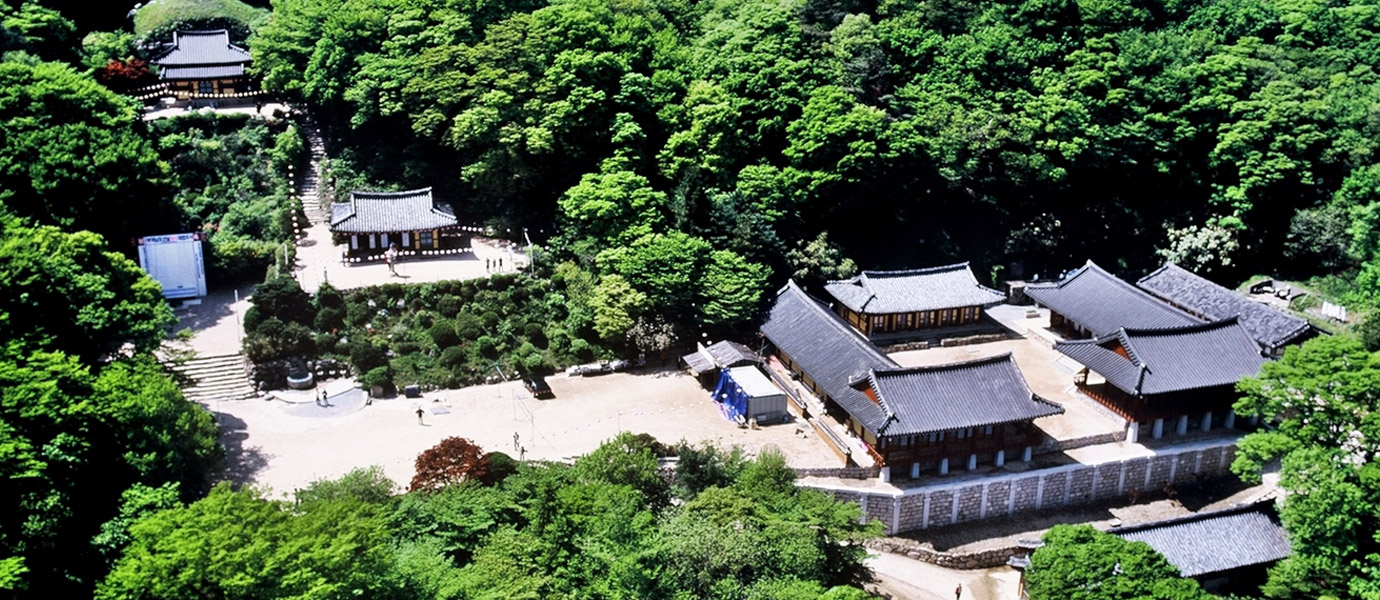
Along with Bulguksa Temple, Seokguram Grotto was one of Korea's first UNESCO World Heritage sites listed in 1995. One particular tale featuring Bulguksa and Seokguram Grotto told in Samguk Yusa (History of the Three Kingdoms) describes a man called Kim Dae-sung who was reincarnated to build Seokbulsa (Seokguram Grotto) Temple for his parents in his previous life and for his parents in his present life.
Seokguram Grotto is a cave Temple. It has a free-hanging dome that uses stone nails horizontally driven in between the stones to keep it balanced and stable. Seokguram Grotto was not the first cave temple in Korea. But most of them used small natural caves or carved rocks to form shrines. Seokguram Grotto, however, was designed and built using intricate geometry and architectural engineering unlike any other of its kind in Korea.
Under the solid artificial dome, the main chamber serves as a prime example of Silla-styled Buddhist art. The endlessly benevolent and gentle expression on the faces of statues along with the grand scale evoke emotions beyond awe and expression. On the very back of the main Buddha is a cross-sectional grotto, which features the Eleven Faced Guanyin Statue. Also, a small tabernacle was built around the dome to house ten additional Buddha statues. The Buddhas on the left and right sides of the front row have been stolen at some point by thieves. Today, only eight remain. Under the tabernacle, there is a Cheonbu Statue and four of the Bodhisattva in the front, and ten monk statues in the back. Each has different facial expressions and posture, making them look extremely lively and animated.
Seokguram Grotto is a structure in which a square chamber is attached to the front of the original chamber. There are Four Heavenly Kings statues in the passageway connecting rear room with the room, and two Deva Kings and eight guardian god statues who protect the shrine from evil. It is a highly detailed place.
Seokguram Grotto Information
- Location : 873-243 Bulguk-ro, Gyeongju
- Opening Hours
- Mid-March to September 06: 30-18: 00
- February to mid March 07: 00-17: 30
- November-January 07:00-17:00 (until 17:30 in October)
- Entrance Fee: Adult 5,000 won / Teenagers and soldiers 3,500 won / Children 2,500 won
- Inquiries : 054 746 9933
- Website : http://seokguram.org
#3Silla Arts and Science Museum
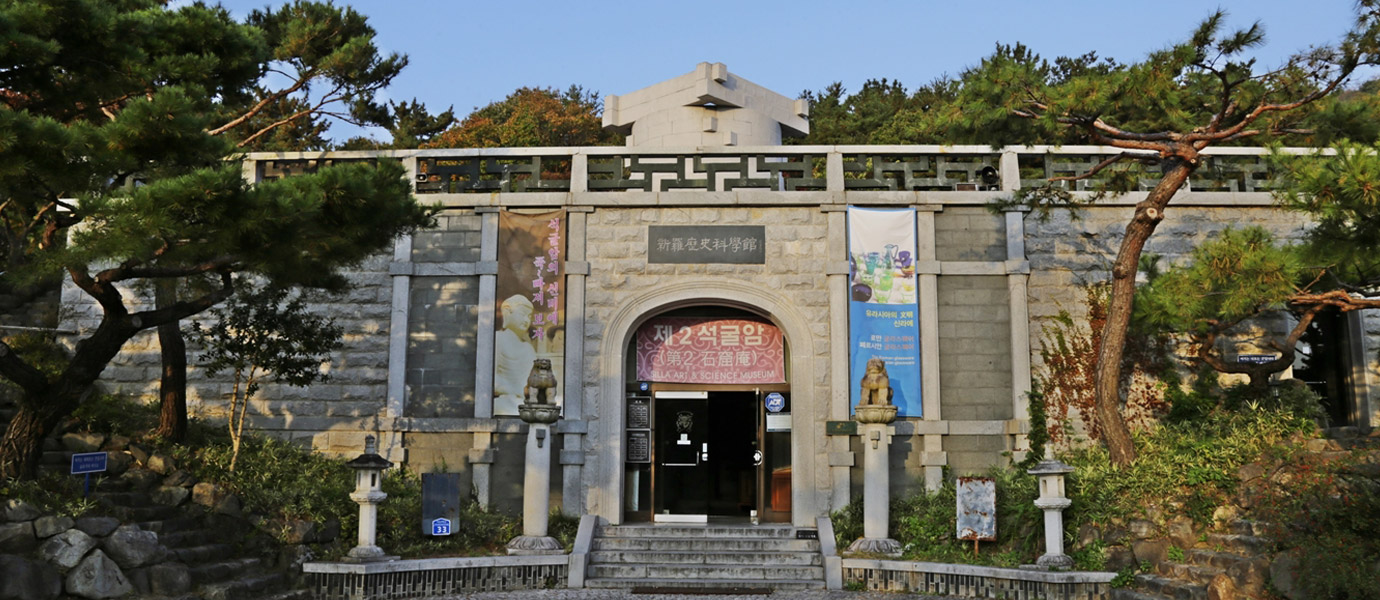
Although Seokguram is one of the masterpieces of Silla-styled Buddhist art, the main Sakyamuni Buddha today is protected behind a large glass screen. During their occupation of Korea, the Japanese plundered artifacts from Korea. They also “restored” Seokguram without any knowledge of the science or building techniques that went into building the structure in the first place. At that time, it was decided that along with massive excavations, the site should be dismantled to facilitate restoration efforts. After everything was dismantled, the stones were lost and simply replaced by concrete. The natural spring flowing through the bedrock underneath Seokguram was also blocked up, which led to two problems. The concrete blocked ventilation, which caused a catastrophic build-up of moisture. Also, blocking the stream meant that the water had no outlet to escape. Soon, moss started to spread across the entire complex. This faulty restoration is why Seokguram sits pitifully behind its protective glass screen today.
Everyone should understand this history before visiting Seokguram. You can learn about Seokguram and the outstanding Buddhist architecture used during the Silla Dynasty at the place nicknamed the “Second Seokguram” – The Silla Art and Science Museum.
There is an exhibition detailing the scientific secrets of Seokguram, which are now trapped behind glass windows, fighting a war with moss and moisture. There is a 1/5 model of Seokguram, where you can look closely at the main chamber and the internal structure.
Silla Arts and Science Museum Information
- Location : 33, Hadong Craft Village
- Opening Hours : 09: 00-17: 00 (Closed on Mondays)
- Enterance Fee : Adult 5,000won / Student 3,500won
- Inquiries : 054 745 4998
- Website : http://www.sasm.or.kr/
#4Gyeongju Historic Area - Hwangryongsa District#BunhwangsaTemple #HwangnyongsaTempleSite #HwangnyongsaMuseum
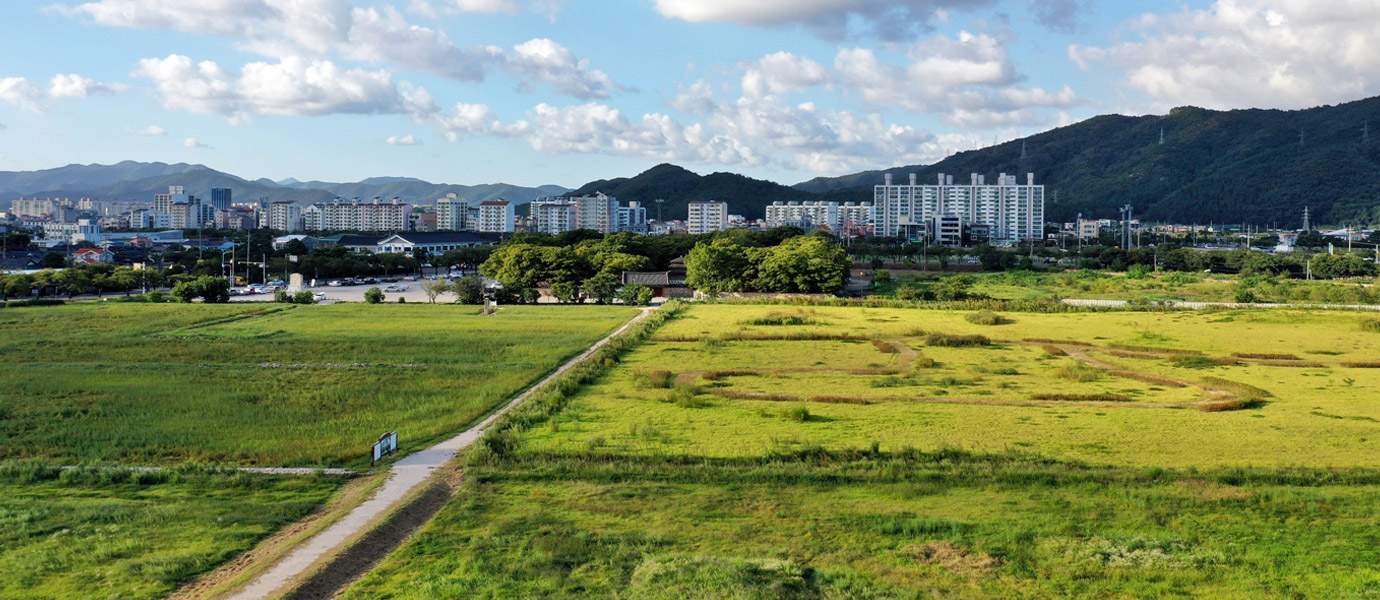
Gyeongju is often referred to as an “open-air museum.” Precious cultural heritage and relics are scattered throughout the city. Naturally, in 2000, almost the entire area encompassing Gyeongju and Namsan Mountain was registered as a UNESCO World Heritage Site under the name “Gyeongju Historic Area.” This area consists of five districts: Wolseong district, Hwangryongsa district, Daereungwon district, Bomun Tourist Complex, which are all located near the city area, and finally, the Namsan district, which is further south of the city. These five districts contain a number of cultural monuments, including pagodas, temples, palaces, royal tombs, buddhas, and mountain fortresses, built across more than 1,000 years of history.
The first place you should check out on your way from Bulguksa to the city is the Hwangryongsa district. The main relics of the Hwangryongsa District include the Bunhwangsa Temple and Hwangryongsa Temple.
Bunhwangsa Temple was built in the third year of Queen Seondeok’s reign (634 CE), and was the state temple of the Silla Dynasty, which is why archaeologists believe that it would have been as immense in size as Hwangryongsa Temple. During the Goryeo and Joseon Dynasties, foreign invasions left most of the temple buildings in ruins. Currently, all that remains of the 30th National Treasure of Bunhwangsa Temple is the Mojeon Stone Pagoda, a Silla Dynasty well called Samryong Byeon-Eojeong, and part of a monument honoring Buddhist monk Wonhyo’s achievements called Hwajangguk Sapjeok.
Next to Bunhwangsa Temple is the temple site of Hwangryongsa Temple, which used to be the largest Buddhist temple in the East. Built across almost a century from the reign of King Jinheung to the reign of Queen Seondeok, the main building of the temple housed massive Triad Buddha statues. The Temple also featured a grand nine-story wooden pagoda (82m tallh), which was equivalent to the height of a 25-story apartment building today. Unfortunately, the Temple was burned down by Mongolian soldiers during the Goryeo Dynasty. Today, only a part of the building site and some foundation stones remain in the vast site.
If you take a tour of the Hwangnyongsa Museum together with Hwangnyongsa Temple Site, you can experience the grand scale at which the Hwangryongsa Temple was built. Hwangryongsa Historical and Cultural Center opened to the public in November 2016 to share the excavation and restoration processes for the Hwangryongsa Temple site. The Center has a 3D audio-visual room that guides visitors through the period of Hwangryongsa Temple’s construction until its destruction, a Silla History Exhibition Hall that displays artifacts excavated during the research process, and a 1:10 scale model of the pagoda on the first floor.
Hwangryongsa Temple Site Information
- Location : 320-2 Guhwang-dong, Gyeongju
- Opening Hours : No fixed viewing time
- Entrance fee : Free
Bunhwangsa Temple Information
- Location : 94-11, Bunhwang-ro, Gyeongju-si
- Opening Hours : 08:00-18:00 (until 17:00 in winter)
- Entrance Fee : Adults 1,300 won / Teenagers and soldiers 1,000 won / Children 800 won
- Inquiries : 054 742 9922
Hwangnyongsa Museum Information
- Location : 64-19, Limhae-ro, Gyeongju-si
- Opening Hours: 09:00-18:00 (Closed on January 1st, Chuseok, New Year's Day)
- Entrance Fee : Adults 3,000won / Teenagers and soldiers 2,000won / Children 1,500won
- Inquiries : 054 777 6862
#5Gyeongju Historic Area – Wolseong District#Wolseong #Cheomseongdae #Donggung Palace and Wolji Pond
The Wolseong district is home to the royal palaces of the Silla Dynasty. Travelers can visit Wolseong Fortress, the royal palace where princes used to live live, and Cheomseongdae. Wolseong is currently undergoing excavations as part of the Silla Royal District Restoration Project. The interior building site is divided into four zones (A-D) to conduct excavation research. The excavating company also runs the "With Wolseong" project to share the excavation process and findings with the public. If you visit Wolseong on Friday during the summer, you’ll get a chance to see the site up close in person.
“With Wolseong” Tour Information
- Guided Tour Program : 5 times a day, at 10:00, 11:00, 13:30, 15:00, 16:30, each session lasts 30 minutes
- Guided Tour Booking
- On-site application (at Education office in Wolseong Excavation Site)
- Advanced Booking (Group-oriented, Phone: 054-777-5027 / e-mail : ws_irang@naver.com)
- Commentary : operation may be adjusted depending on the time of day, weather, etc. so please inquire before visiting.
Revealing of excavated artefacts every Friday at 2 pm in Summer
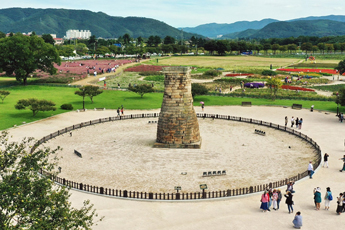
Cheomseongdae
Just a five-minute walk away from Wolseong is Cheomseongdae. This scientific stone building is the “oldest astronomical observatory in Asia” and was built by Queen Seondeok. It is filled with ancient scientific secrets. The 365 stones from which Cheomseongdae was built represents the number of days in a year, and the total of 29 levels and 30 levels of stone steps (depending on which level to count from) represents the number of days in a lunar month. The top 12 columns and the bottom 12 columns of the window symbolize the 24 seasonal divisions of the year according to the lunar calendar. Experts believe astronomers would have stepped inside the structure as they observed the starts. The top 12 tiers and bottom 12 tiers divided by a window in the middle, represent the 12 months and 24 seasonal divisions of the year. So, look and think carefully to imagine how our ancestors would have used Cheomseongdae.
- Location : 839-1, Inwang-dong, Gyeongju, Gyeongbuk
- Opening hours : 09:00-22:00 (until 21:00 in winter), Open all year
- Entrance Fee : Free

Donggung Palace and Wolji Pond
We’ve arrived at the final destination for day-1 of your trip across Wolseong district! Donggung Palace and Wolji Pond are widely regarded as the top tourist destination in Gyeongju to visit in the evening. Some people might be more familiar with the name “Anapji Pond.” Originally a palace for princes, Donggung Palace and Wolji Pond came to be known as Anapji Pond when it fell into ruin during the Joseon Dynasty and became a haven for wild geese and ducks. After finding the original name in the Samguk Sagi (History of the Three Kingdoms), Anapji Pond was renamed Donggung Palace and Wolji Pond. In the 14th year of King Munmu (674 CE) he created the pond called “Wolji” and after the unification of Silla, the palace “Donggung” was constructed in 679 CE. When the sun goes down and the main lights come on, the colorful night begins for Donggung Palace and Wolji Pond.
- Location : 102 Wonhwa-ro, Gyeongju, Gyeongbuk
- Opening Hours : 09:00-22:00 (Closed at 21:30)
- Entrance Fee : Adults 3,000 won / Teenagers 2,000 won / Children 1,000 won
#6Gyeongju Historic Area- Daereungwon Ancient Tombs District
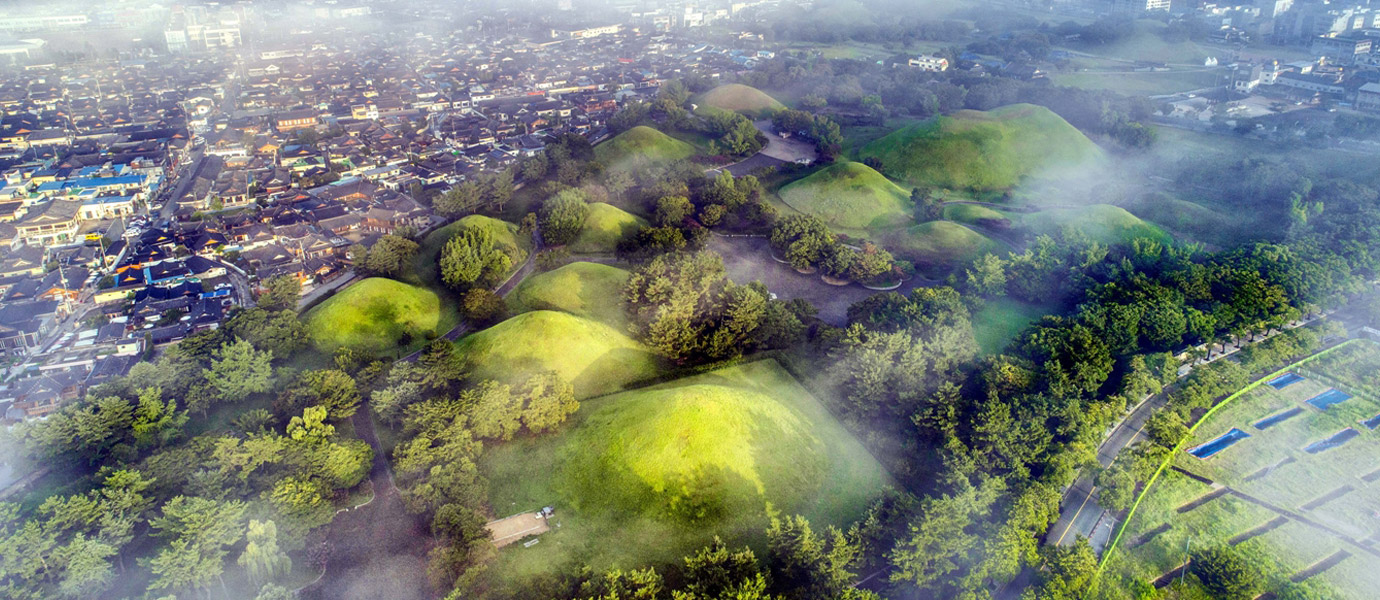
Photo Caption: Gyeongbuk Nadeuri (Jeong Cheolje-Morning of Daereungwon Ancient Tombs)
Daereungwon Ancient Tombs is a vast 126,500m2 district featuring 23 ancient tombs from the Silla Dynasty era. The Daereungwon Ancient Tombs District may refer specifically to Daereungwon Ancient Tombs alone, but most of the time, it includes Nodong-ri and Noseo-ri tombs, the Daerungwon District’s Hwangnam-ri Tombs, and the Hwango-ri Tombs. It takes quite some time just to look around the inner circle of the Daereungwon Ancient Tombs, so it’s best to stay relaxed as you take the sights in. The must-see tombs include the tomb of King Michu (13th King of Silla), the immense and eye-catching Great Hwangnam Tomb, and the unique Cheonmajeong (The Tomb of the Heavenly Horse), which visitors can see inside the tomb. Daereungwon Ancient Tombs also has a popular photo zone in front of a beautiful magnolia tree standing between ancient tombs. It’s a picture-perfect point, so you won’t want to miss it.
To the east, south, and north of the Daereungwon Ancient Tombs District, there are numerous tombs of varying sizes. First, excavation works are ongoing on the eastern side in Hwango-ri. You can visit excavation sites at the Jjoksaemjeok Excavation Hall. In the northern side of Daereungwon Ancient Tombs, you’ll see the Nodong-ri and Noseo-ri Tombs. Nodong-ri is home to the largest and most substantial tomb in Gyeongju, the Bonghwangdae tombs, while Noseo-ri is home to Seobongchong, Geumgwanchong and others. The entire area is a popular picnic spot. Finally, to the south, the Hwangnam-ri tombs serve up splendorous views at sunset. You won’t be able to take your eyes off the sunset that turns red against the tombs and metasequoia trees.
Daereungwon Ancient Tombs Information
- Location : Hwangnam-dong, Gyeongju, Gyeongbuk
- Opening Hours : 09:00-22:00 (Closed at 21:30)
- Entrance Fee : Adults 3,000 won / Teenagers 2,000 won / Children 1,000 won
- Note : Other tombs belonging to the Daereungwon have no fixed viewing times and no admission fee.
#7Yangdong Village
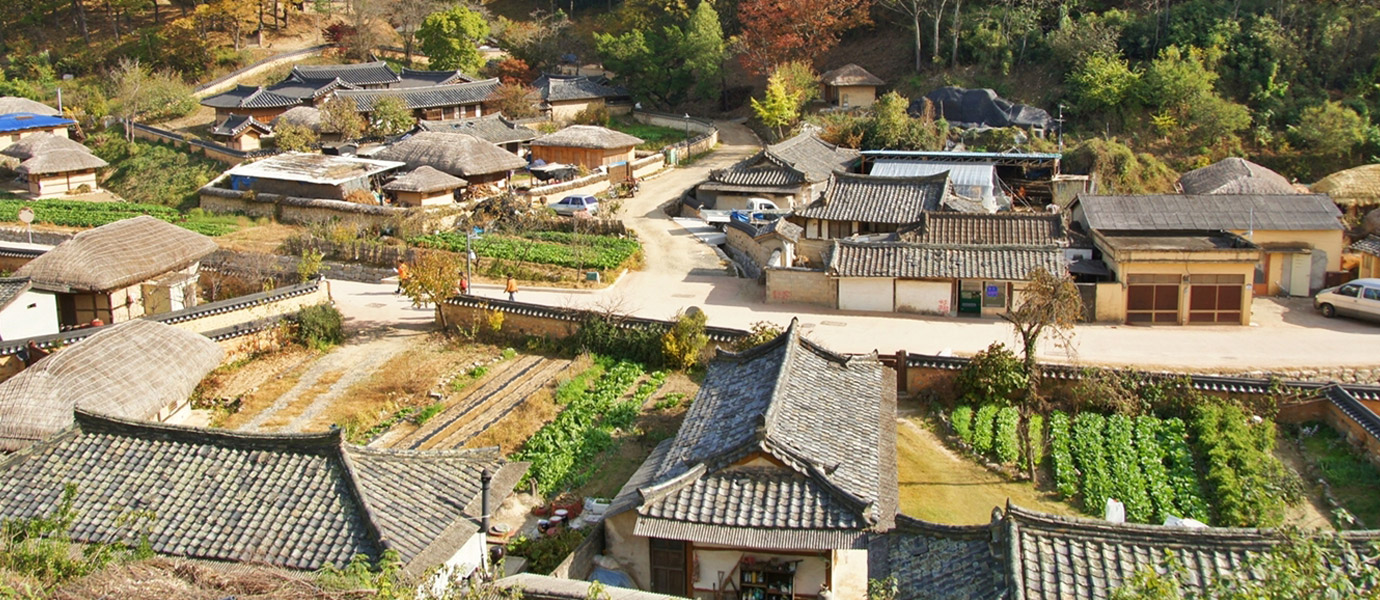
Yangdong Village was listed together with Hahoe Village in Andong as World Cultural Heritage sites in August 2010. The village was the clan village of the Son Clan of Wolseong and Lee Clan of Yeogang, and there are many ancient houses that show the traditional house structure of the family in the Joseon Dynasty. Looking from the peak of Seolchangan Mountain, the mountain has four ridges and valleys that form the shape of the Chinese Character “Mul” (勿). The valley features 160 ancient tiled houses (古瓦家) as well as straw-roofed houses (草家). Yangdong is said to be a hotbed for wealthy and talented people, as its mountains and terrain are some of the best in Korea. According to history, Yangdong Village produced 116 officials during the Joseon Dynasty, and it was home to some of the most respected scholars of their time, including Son Jungdon and Lee Eon-jeok.
The main old houses include Hyangdan, a house granted by the king to Lee Eon-jeok (Literary name: Hwejae), Seobaekdang (Songcheom Head House), the Mucheomdang house where the father of the late Lee Eon-jeok lived, and the house where Son Jungdon (Literary name: Woojae) set up a new branch of the Son family.
Meanwhile, Yangdong Village offers a Traditional Culture Experience Program from spring to autumn every year to preserve and promote its traditional culture.
Yangdong Village Information
- Location : 134, Yangdong Village-gil, Gangdong-myeon, Gyeongju
- Opening Hours : April ~ September 09: 00-19: 00 (From October to March until 18: 00)
- Entrance Fee : Adults 4,000 won / Teenagers and soldiers 2,000 won / Children 1,500 won
- Inquiries : 054 762 2630
- Website : http://yangdong.invil.org
#7Oksanseowon Confucian Academy
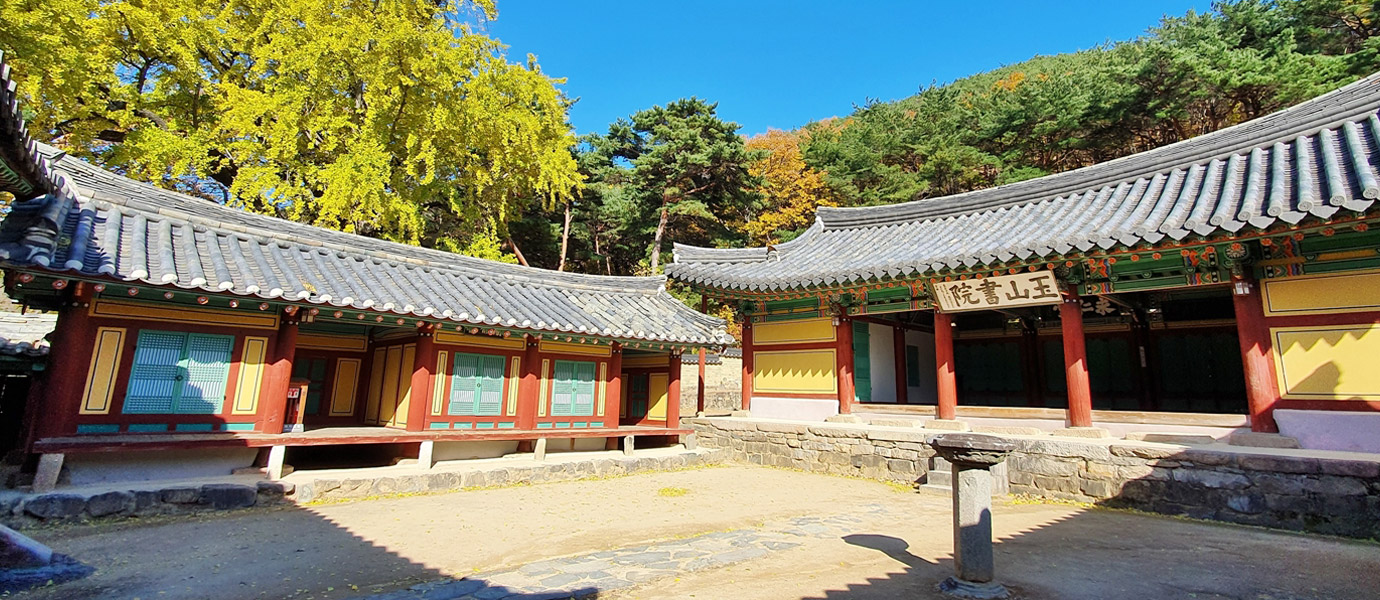
Oksanseowon Confucian Academy in Gyeongju was included among the nine Confucian Academies listed with UNESCO in July of 2019. It was built in 1572 to honor the teachings and virtues of Lee Eon-jeok, a Joseon-era scholar who was one of the Dongbangohyun (“five wise men of the east”). Oksanseowon Confucian Academy is one of the 47 Confucian Academies that were excluded from the abolition order decreed by the King Gojong’s Regent, Heungseon Daewongun, during the final days of the Joseon Dynasty. It consists of a typical Confucian Academy architecture with a lecture hall on the front of the academy and a shrine placed in the back.
If you enter through the Yeokrakmun Gate (main gate), you’ll see a pavilion called "Mubunru," this is the first example where an upper floor was included in the construction design of a Confucian Academy. In the front is the “Search for Benevolence Hall” (Guin Dang), while to the left and right sides are the Mingujae and Amsujae dormitory buildings. In terms of signboards, there are two Oksanseowon Confucian Academy signboards - the one on the front of the auditorium was written by the famous calligrapher of Joseon Kim Jung-hee. Behind the lecture hall is a shrine where the ancestral tablet, memorial stone, and letters of Lee Eon-jeok are enshrined.
At the back of the Academy is a cool, clear stream with large flat boulders and a spot called Seshimdae which literary means “a place to cleanse one’s mind.” Seshimdae was created to teach students that one must get in touch with nature to become a true scholar.
Oksanseowon Confucian Academy Information
- Location: 216-27, Oksanseowon-gil, Angang-eup, Gyeongju-si
- Opening Hours: 10:00-17:00
- Entrance fee: Free
- Inquiries : 054 762 6567
- Cultural Tourism Commentary Time : 10:30-16:30
